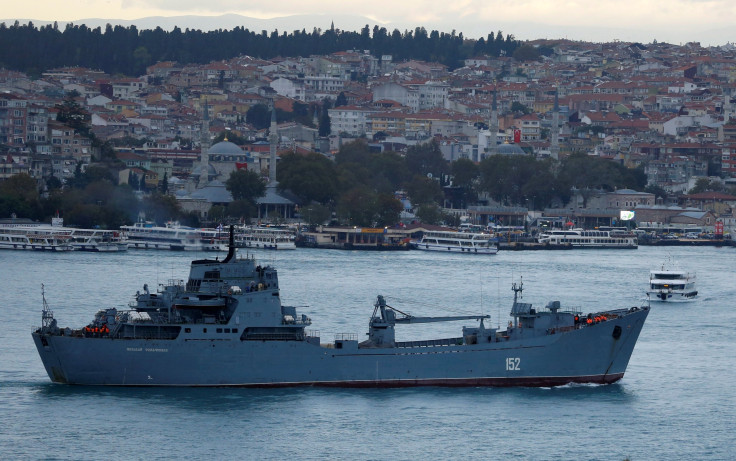Is Russia Preparing For War? Moscow Unveils Advanced Warship With Missile, Radar System For Pacific Fleet

Russia's Pacific Fleet is getting a state-of the-art-warship armed with the newest missile launching technology and a cutting-edge stealth radar system. The warship, a Steregushchy-class corvette, is scheduled to join Russia's Pacific Fleet by the "first half of 2017," according to a press release from The Russian Navy Monday.
The addition will be the fifth Steregushchy warship in the Russian Navy, but the first to join the Pacific Fleet. The ship named the Sovershenny, which translates into “Unbeatable,” was undergoing sea trials.
#Russia Pacific Fleet planning to commission Project 20380 #Corvette Sovershenny in earlier 2017 https://t.co/3HruDbZ4pT pic.twitter.com/vWYrZJIi7A
— Navy Recognition (@NavyRecognition) January 18, 2017
The Sovershenny, which is roughly 343 feet long, requires a crew of between 90 and 100 people. The Russian Navy said the construction of the Sovershenny was for the purpose of defending its eastern coasts.
It is armed with the newest guided missile launchers that have the abilities to strike ships on top of the water as well as submarines, aircrafts, and shore-based targets. The targeting system on board allows military personnel to track multiple targets simultaneously. The ship is also armed with large caliber machine guns and grenade launchers.
The ship’s stealth technology is considered to be state-of-the-art because it was constructed with a steel hull and covered with a type of fiberglass specifically designed to prevent it from being detected by radars.
The ship can go 4,000 nautical miles and last 15 days at sea without having to refuel.
Russia announced it would increase its military spending by $6 billion in 2016 while reducing its budget on welfare programs that year from $210 billion to $203 billion.
Russia allocated $66.4 billion towards military expenses in 2015, making it the fourth biggest spender on defense in the world, according to a Moscow Times report on April 5, 2016. The United States led all countries by spending $596 billion on defense costs in 2015, followed by China that spent $215 billion and Saudi Arabia that spent $87.2 billion.
© Copyright IBTimes 2024. All rights reserved.





















